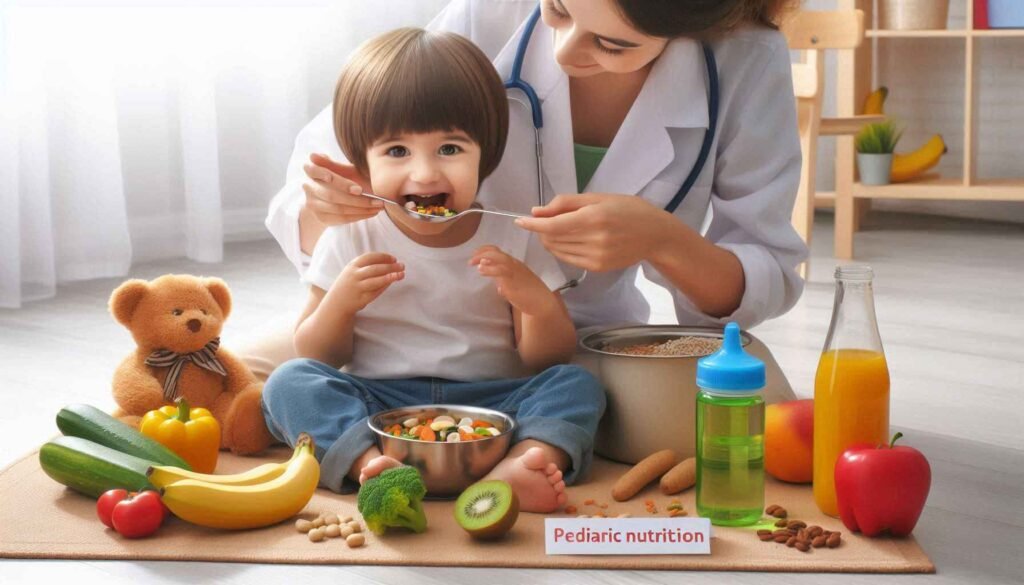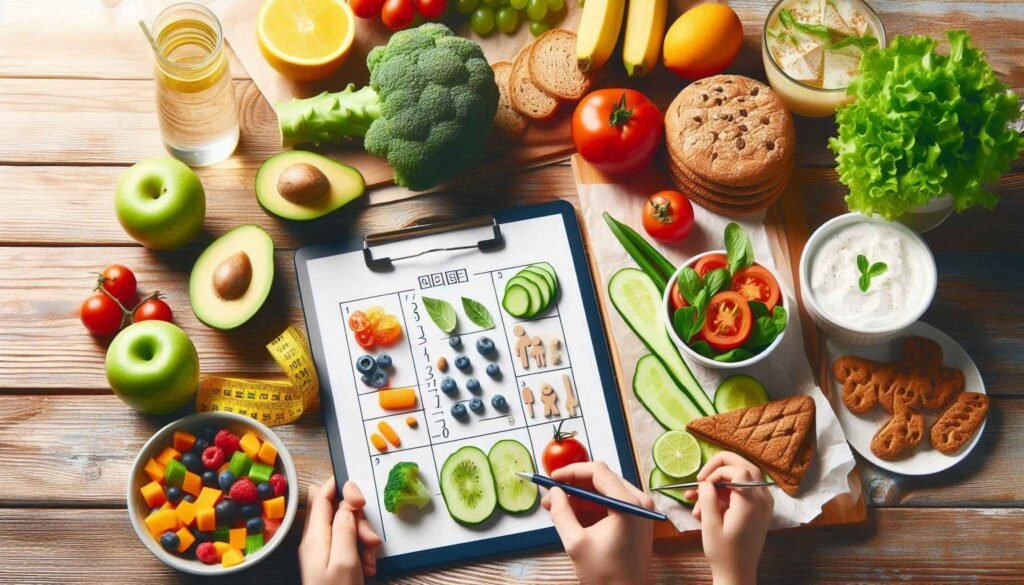
When it comes to parenting, one of the most rewarding things you can do is set your child up for lifelong success, and that starts with nutrition. Pediatric nutrition plays a critical role in growth, cognitive development, and emotional health. Establishing healthy eating habits from a young age isn’t just about today’s dinner table—it’s an investment in your child’s future. Let’s dive into some practical strategies to help you build those habits, starting now.
1. Why Early Nutrition Matters
Children are growing at an incredible rate, and what they eat directly impacts their physical and mental development. Nutrition influences everything from brain function to immune system health. A nutrient-rich diet helps kids grow strong bones, stay active, and be resilient against illnesses. Furthermore, forming healthy habits early means that children are more likely to maintain a balanced diet into adulthood.
2. Nutritional Needs by Age Group
Understanding your child’s nutritional needs is the first step in building those healthy habits. Here’s a breakdown of key requirements by age group:
Ages 0-4: Infants and Toddlers
- First Foods: During the first 6 months, breast milk or formula is the primary source of nutrition. Once solids are introduced, start with iron-fortified cereals, pureed vegetables, and fruits. This is a critical window for introducing a variety of foods and flavors, which can help reduce pickiness later.
- Protein and Iron: Offer protein-rich foods like eggs, beans, lean meats, and fish. Iron is essential for brain development, especially in toddlers, so include fortified cereals and green leafy vegetables.
- Nutrient Variety: Focus on nutrient-dense options rather than processed foods. Encourage whole fruits, low-sodium vegetables, and healthy grains to provide essential vitamins and fiber.
Ages 5-8: Early School Age
- Growing Variety: This age group benefits from a wider variety of whole foods. Grains like oatmeal, brown rice, and whole-wheat bread should be staples. Fruits, vegetables, lean protein, and low-fat dairy are crucial for their active lifestyle.
- Daily Needs: Girls in this age range need about 1200-1800 calories per day, while boys may require 1200-2000, depending on activity level. Emphasize the importance of portion control and balanced food choices.
3. Key Elements of a Balanced Diet
Protein: The Building Block
Protein helps repair tissues and supports muscle growth. Lean meats, eggs, beans, unsalted nuts, and seeds are great sources. Aim for a variety to provide a range of nutrients while keeping meals interesting.
Fruits and Vegetables: Color Your Plate
Introduce fruits and vegetables in as many colors as possible to ensure a wide range of nutrients. For instance, carrots and sweet potatoes are rich in beta-carotene, while berries and leafy greens are packed with antioxidants and vitamins. Fresh, frozen, and canned vegetables are all good options, but try to choose those with no added salt or sugar.
Whole Grains and Dairy: Energy and Bone Health
Whole grains like brown rice, quinoa, oats, and whole-wheat bread provide energy, fiber, and important minerals. For dairy, opt for low-fat or fat-free milk, yogurt, and cheese. Fortified soy beverages can also be a suitable option if dairy is not well tolerated.
4. Building Healthy Eating Habits
a. The Power of Family Mealtimes
Family meals are a wonderful opportunity to promote healthy eating. Studies show that children who eat with their families consume more fruits and vegetables and are less likely to develop unhealthy eating habits. Make mealtimes pleasant, screen-free experiences where kids feel encouraged to try different foods.
b. Involving Kids in the Kitchen
Another powerful strategy is to involve children in meal preparation. Let them help choose recipes, pick out fruits and vegetables at the store, and prepare meals at home. This involvement helps them develop a sense of ownership over their food, making them more likely to try—and enjoy—a variety of foods.
c. Setting a Positive Example
Children imitate what they see. If you regularly consume vegetables, whole grains, and healthy proteins, they’re more likely to do the same. Enjoying a balanced diet yourself sets a positive example, reinforcing these habits at home.
5. Limiting Unhealthy Nutrients
a. Reducing Added Sugars
Added sugars can contribute to obesity and other health issues in children. Focus on naturally sweet foods like fruit instead of processed sweets. If your child drinks juice, make sure it’s 100% juice and limit it to small servings.
b. Avoiding Saturated Fats
Opt for healthy fats like olive oil, avocado, and nuts, while limiting sources of saturated fats such as red meat, butter, and full-fat dairy. Swap out butter for plant-based oils in cooking and choose leaner cuts of meat.
c. Managing Sodium Intake
Most processed foods are high in sodium, which can lead to high blood pressure later in life. Read labels to find lower-sodium alternatives, and use herbs and spices to flavor food instead of salt.
6. Practical Tips for Handling Picky Eaters
It’s natural for young children to go through phases of picky eating. Here are some strategies to cope:
- Keep Offering: It can take multiple exposures—sometimes as many as 10-15 times—before a child accepts a new food. Don’t give up if they refuse it the first few times.
- Make Food Fun: Arrange vegetables in fun shapes or let your kids help “design” their plates. This creativity can make healthy foods more appealing.
- Choice and Autonomy: Offer choices between healthy options. Instead of asking, “Do you want broccoli?” ask, “Would you like broccoli or green beans?”
7. Encouraging Healthy Snacking and Hydration
Healthy Snacks:
Healthy snacks keep energy levels stable throughout the day. Some options include:
- Fresh fruit slices with nut butter
- Yogurt topped with berries
- Veggie sticks with hummus
Hydration Habits:
Water should be the primary drink for hydration. Limit sugary beverages like sodas and sports drinks. Instead, encourage plain water or milk. Keeping a fun, refillable water bottle with them can help remind kids to stay hydrated.
8. Developing a Positive Relationship with Food
Avoid Using Food as a Reward or Punishment
Using sweets or snacks as a reward can create an emotional connection with these foods, potentially leading to issues with food and eating habits later in life. Instead, reward positive behavior with non-food treats like stickers, extra playtime, or a family outing.
Teach Mindful Eating
Encourage children to eat slowly, savor their food, and listen to their bodies’ hunger and fullness cues. Eating without distractions—like screens—helps them recognize these cues better, ultimately preventing overeating.
9. Supporting Specific Health Concerns
For children with specific dietary needs—such as allergies, lactose intolerance, or sensitivities—consult a pediatrician or a registered dietitian. They can provide tailored guidance to ensure nutritional needs are met without compromising health.
10. Conclusion: Building a Foundation for Life
Healthy eating isn’t just about what’s on the plate today; it’s about laying the foundation for a lifetime of good habits, strong health, and a positive relationship with food. By involving kids in food choices, modeling healthy behaviors, and offering a variety of nutritious options, you’re equipping them with the tools they need to thrive. Remember, the goal is progress, not perfection—every small step towards healthier choices is a big step towards their well-being.



